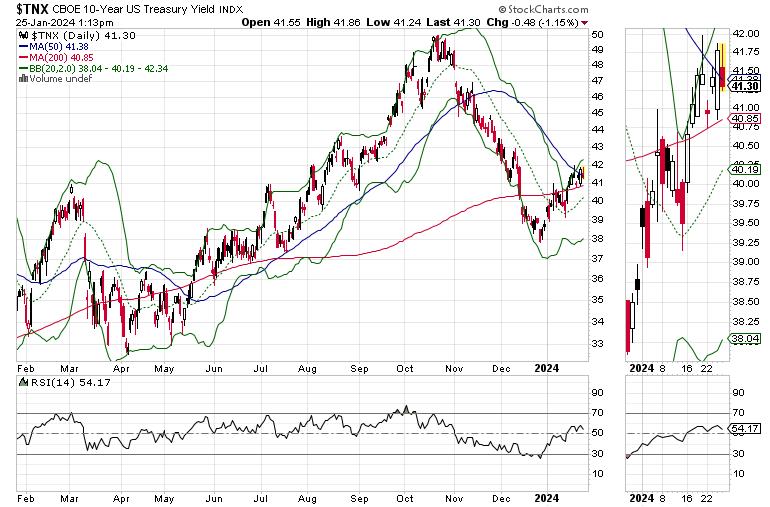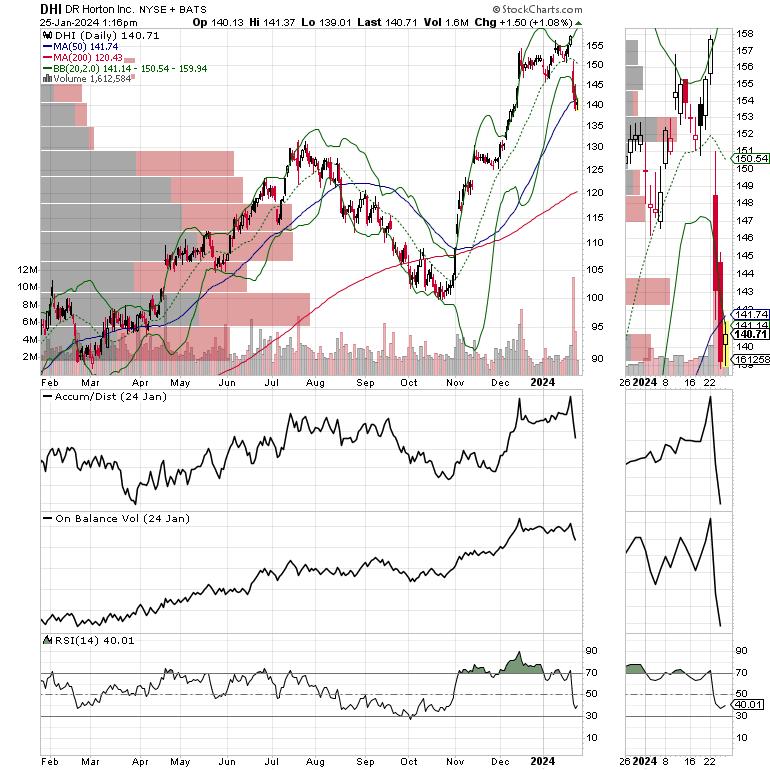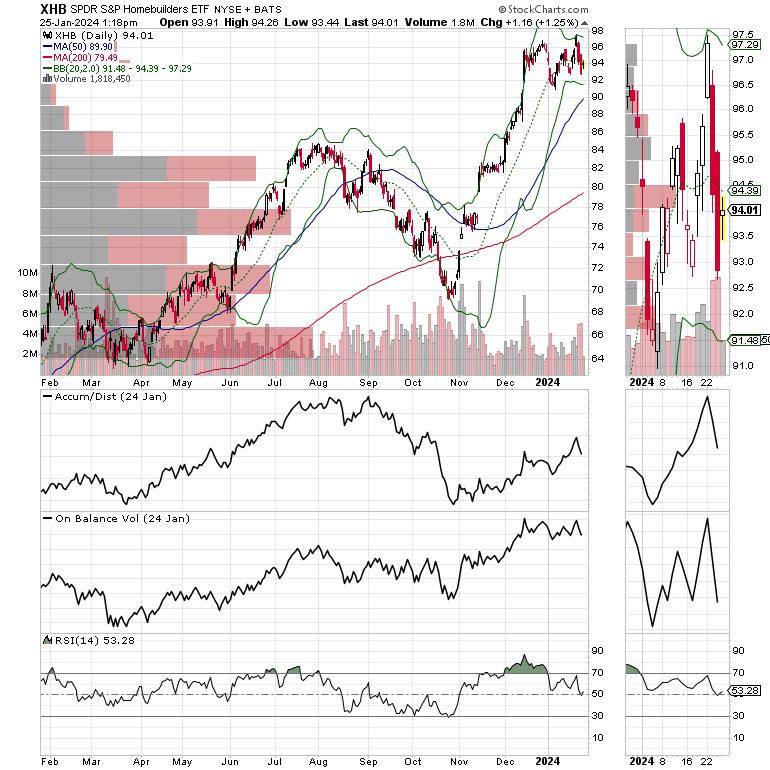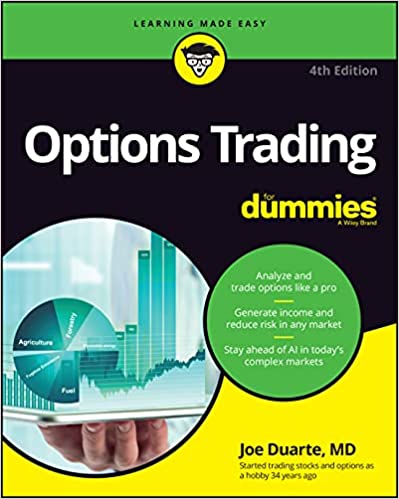Those of us who have been bullish on the homebuilder sector got a reality check on 1/23/24 when, despite beating on revenues, D.R. Horton (DHI) missed earnings expectations and the stock tanked, taking prices for other homebuilders such as Lennar (LEN) down as well.
Despite the overall positive tone of the report, especially the company's continuing ability to make money, inside there were several reasons to be concerned. In particular, there was the order backlog of homes under contract, which shrunk by 11%, while it looks as if unsold inventory is starting to climb, with 730 completed homes sitting on lots for over six months without being sold. That suggests that Horton may be building fewer houses and that the ones that are ready to go are taking longer to sell.
But here's what most concerning: the report covered earnings which corresponded to the period extending from October 1 to December 31, 2023. That's when the U.S. Ten Year Note yield (TNX) and mortgage rates topped out, as I predicted they would, at 5%, before falling to 3.8%. What we heard from companies reporting and commenting during that period was the drop in mortgage rates was bringing in buyers from the sidelines. We also heard that the incentives offered by builders, such as buying down points to reduce mortgage rates as well as lowering prices and adding amenities to homes at low prices, were also increasing sales.
At the same time, the latest figures for new home sales (December 2023) beat expectations both month over month and year over year, while existing home sales cratered to new lows. So, if things were turning around, then why is Horton's order backlog falling, and why does it have a bunch of houses sitting on the unsold lot for greater than six months?
I spoke to a realtor friend who may have the answer. She told me that she had taken some clients to a DHI property during that period and that they were turned down for a DHI-backed mortgage. She took them elsewhere and they got a loan.
All of which raises the question of whether Horton was managing its risks by enforcing very tight lending standards, or whether the credit worthiness of potential homebuyers has now deteriorated to the point where lower mortgage rates, incentives, and rain dances are not going to help people buy homes.
In other words, while demand remains strong and supplies remain tight, the personal finances of would-be buyers may not be good enough for lenders to take risks.
Has the Fed Killed the Economy?
Central to the argument now is the question of whether the Federal Reserve's rate hikes and the consequential rise in bond yields have reached the point where homebuilders are becoming concerned about the credit quality of potential buyers, and thus their inventory is quietly increasing as their sales slow. Moreover, if this is true, then the longer the Fed keeps rates at current rates and bond yields continue to rise, it's worth asking: Is the recession that hasn't come to fruition yet about to become apparent?

The U.S. Ten Year Note yield (TNX) has now crossed above the important 4.1%-yield area and its 200-day moving averages, which are both negative developments. It is also testing the important 50-day moving average resistance area. If this persists, bond yields will likely continue to rise until the Fed finally lowers rates or inflation shows signs that it's cooling off over the long term.

The rise in yields brought added to the problems caused in the shares of D.R. Horton by its earnings report. The shares are now testing the support of the 50-day moving average. Both Accumulation/Distribution (ADI) and On Balance Volume (OBV) tumbled as short-sellers seized on the opportunity (ADI) and buyers became sellers (OBV). We'll see if the shares can hold up at these levels. The next support level is at 130.

Overall, the homebuilder sector, as in the SPDR S&P Homebuilder ETF (XHB), held up better than DHI. But ADI and OBV for this ETF are also cautionary. A break below $90 for XHB would be very concerning.
Bottom Line
The earnings miss by D.R. Horton raises red flags, and suggests that the damage to the housing market caused by the Fed's rate increases may go a bit deeper than previously thought.
It is possible that, even though supply and demand continue to favor the homebuilders, the business itself is starting to plateau. In essence, the housing market may be faced with a new problem; consumers whose personal financial situation is deteriorating may not qualify for purchases in the current environment. This situation is likely to worsen if layoffs increase over the next few months, as the technology and related sectors continue to downsize their workforces.
If this is how the situation unfolds, then the Fed and the economy may be in worse trouble than most investors realize.
DHI is the bellwether. Because although the company's profit prospects are well above average, it looks as if growth is about to slow, and perhaps maybe even stall, if interest rates don't ease.
Thanks to everyone for your support. I really appreciate it. This weekly report is available on my Buy Me a Coffee Page. If you like this report and want to receive early access this type of content on a regular basis, consider becoming a member. I also appreciate single coffees, which you can buy me here.
To subscribe to my premium service, Joe Duarte in the Money Options.com, click here. Please don't forget to hit the Like button on the posts. It helps to spread the word.
You're the music. I'm just the band.
To get the latest information on options trading, check out Options Trading for Dummies, now in its 4th Edition—Get Your Copy Now! Now also available in Audible audiobook format!
 #1 New Release on Options Trading!
#1 New Release on Options Trading!
Joe Duarte
In The Money Options
Joe Duarte is a former money manager, an active trader, and a widely recognized independent stock market analyst since 1987. He is author of eight investment books, including the best-selling Trading Options for Dummies, rated a TOP Options Book for 2018 by Benzinga.com and now in its third edition, plus The Everything Investing in Your 20s and 30s Book and six other trading books.
The Everything Investing in Your 20s and 30s Book is available at Amazon and Barnes and Noble. It has also been recommended as a Washington Post Color of Money Book of the Month.
To receive Joe's exclusive stock, option and ETF recommendations, in your mailbox every week visit https://joeduarteinthemoneyoptions.com/secure/order_email.asp.
